This week I learned that shortly after the Chaffey’s left Ontario for Australia, Charles Frankish, became the guiding force during the early years of the “Colony.” Frankish commissioned a water fountain to be placed on Euclid Avenue to symbolize prosperity to all visitors that passed through Ontario. The fountain can still be viewed today in the Museum gardens. Charles Frankish arguably was the man who made Ontario the city it has become today.
A little note found between letters…
I did not realize how much one might learn about a person’s life just by reading his correspondence. Indeed letters can create the whole picture of someone’s life like, for example, in the book “The Bach Reader: A life of Johann Sebastian Bach in Letters and Documents” by H. David.
As my second week with the John Seymour papers continue I have read so many letters from and to Mr. Seymour. Some letters are personal, some relate to work and politics, some were written to publishers, but most of them concern music subjects. Between all of the letters I found a little note to Mr. John Seymour that made me smile. Hope it will make you smile too. Have a good day everyone!
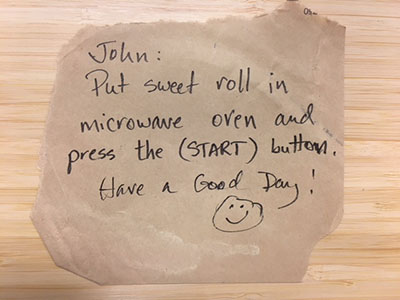
Selling Wallace
Part of what makes the Irving Wallace collection so fascinating is the view it affords of the publishing world of the 1960s-1970s. Wallace’s books were big business for his publisher, Simon & Schuster, as evidenced by the million-dollar advances which they regularly gave him. Simply put, by the time of the The Word‘s publication in 1972, Simon & Schuster knew that Wallace books would sell–and sell and sell. And like any popular product in which a company stakes its money and its name, Simon & Schuster released The Word with a focused and aggressive advertising campaign.
Thanks to documentary evidence in the Wallace collection, we have a clear picture of how The Word was sold to a broad reading public. The publisher dedicated $100,000 to a promotional campaign which included prodigious radio and newspaper buys, as well as what now sound like delightfully quaint ways of selling books: counter and floor displays (see below), mobiles, and streamers. The Word was serialized in at least one magazine (Ladies’ Home Journal), and surely benefitted from the near-universal attention it received from critics in national and regional newspapers.
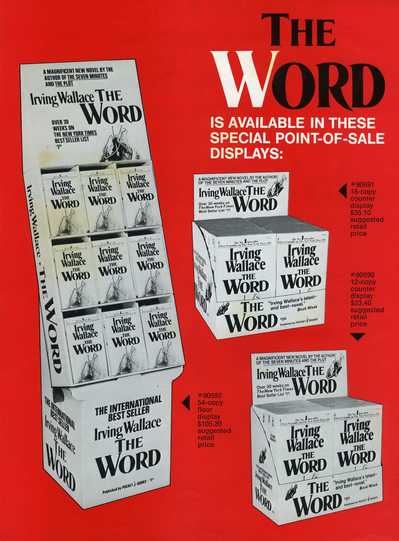
It is difficult to imagine such resources being devoted to selling a single book nowadays. I have a sense–despite the continued success of the Stephen Kings and James Pattersons of the publishing world–that we are a much more fragmented reading society today than we were in 1972, when your local bookstore was likely to have an Irving Wallace floor display in the window.
Life and Water: Initial Relflections
Hello Everyone! My name is Sophia and this is my second week as a CLIR CCEPS Fellow! I am excited to continue to learn and grow in this new position!
The past two weeks have led me to consider how water influences our daily lives and the lives of other living things. I spent a lot of time reading about Harold S. Stewart, born in 1894, and how he spent his time. He worked on the advisory boards of citrus growing companies throughout the Upland area and most importantly on the San Antonio Water Company board. Water and its multitude of uses was a big part of his professional life.
Besides learning about his career, I learned about the things that interested him: hiking and hunting. The importance of water can often be easily overlooked, but as Stewart told the story of the San Antonio mountain range as an ever-changing place, I began to see water’s influence. He recalled the wildlife and how there were fewer deer and mountain lions as he grew older. Simultaneously, water was being used to cultivate citrus, and collected to be sold by companies across the Inland Empire. Were the changes in animal
populations reflecting some of the changes in water usage? I am not claiming correlation, but rather noting the deep interconnectedness of the world that takes shape
through water.
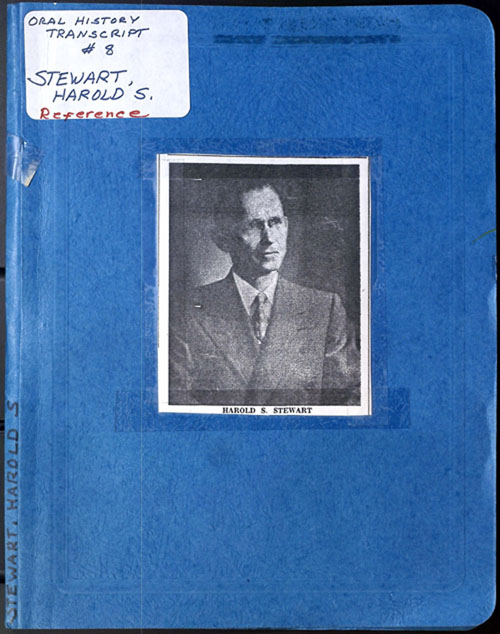
1,000th Scanned Document!!!!
Today marks quite a milestone! This is the 1,000th page digitized at NARA for the CLIRWater project. People often wonder why more collections are not made available to researchers digitally. It has taken approximately 180 hours to scan these 1,000 documents. The All-American Canal Project Histories 1934-1954 collection is made up of 2 linear feet, and 10 linear inches of documents. These 1,000 pages are barely one-third of the relatively small collection. It will likely take another 350-400 hours to complete the digitization of the documents in this collection.
These hours do not even include the scanning of the over-sized documents mentioned in last week’s blog post. There are also two additional NARA collections to be scanned for the CLIRWater project, and each is slightly bigger than the All-American Canal Project Histories 1934-1954 collection. It takes a considerable amount of costly labor, as well as specialized equipment and dedicated digital storage, to bring collections like these to the masses in a digital form. This is precisely why funding for projects like the CLIRWater project is so precious.
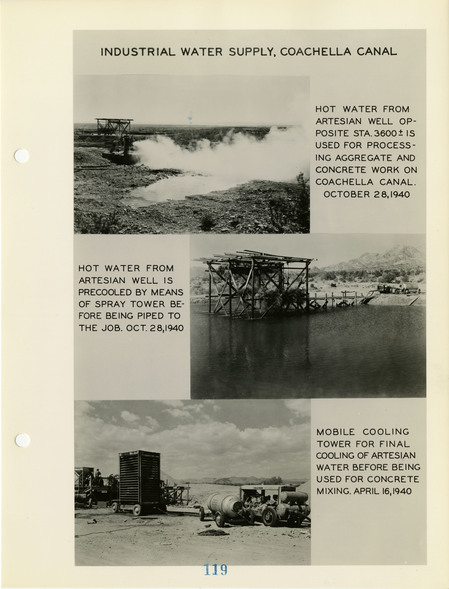
Series: All-American Canal Project Histories, 1948-1954. Record Group 48: Records of the Office of the Secretary of the Interior, 1826-2009. National Archives Identifier: 2292770
Garnishee
I am always trying to understand what Mr. Frankish is trying to convey in his letters. The following is an excerpt from a letter to Mr. MacNeil,
My object in writing you tonight is to ask you if there is no way in which we can retain this either by garnishee or must we really let it go to that fellow “like butter down a dog’s throat.”
Some challenges are like bitter pills. I can crush the pill and use peanut butter to trick myself into eating the pill. Unfortunately at times, I manage to eat the peanut butter, but still avoid taking the pill. If that happens, I will have to investigate other measures with a higher probability of success. Either way, garnishee seems like a better option. I will try that next time. Thank you Mr. Frankish!
New Experience
Hello everyone!
My name is Justyna and this is my first week as a CCEPS Fellow. Thank you for the warm welcome and introducing me to this new environment.
I am working on the John Laurence Seymour papers. So far I have looked into the impressed amount of his letters, plays he wrote, lectures, music scores, and educational materials. He was an American 20th century playwright and composer. His main passion, however, seems to be directing plays with students at the colleges he taught. In one of the letters he received from the Los Angeles City College it says that they couldn’t perform his play “Three Brothers.” The reason…. “lack of men…” It was 1942, and the war has hit the junior colleges male enrollment. How lucky we are today, we do not have to worry about that. Below is the picture of John Seymour as a young man.
I am looking forward to learn more about this extraordinary person.
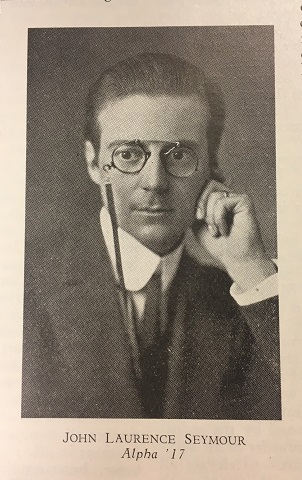
Over-sized Items
When the largest document a scanner can accommodate is 12.5 inches by 17.5 inches, there are bound to be documents that are too large and must be scanned on other equipment. So far, there have been approximately 200 over-sized items in the All American Canal Project Histories Collection. This means that for about every five items which fit in the Epson Expression 10000 XL scanner, about one of them will not fit. The photo below is an example of a VERY over-sized item. Measuring approximately 6.5 feet wide, and 10.5 inches tall, this map will need to be scanned on specialized equipment. As you can see, by just taking a panoramic photograph of the map, the dimensions and details are distorted and some of the information is lost.
This is why these items are set aside until they can be scanned on either a scanner with a larger scanning surface, or a scanner which allows the feeding through of long documents. Scanning of this map will likely be completed on an engineering scanner. Engineering scanners essentially feed through a document while scanning it at the same time. All oversized items in this collection are being noted so that way they can be scanned together when all of the other smaller documents are finished being scanned.

Series: All-American Canal Project Histories, 1948-1954. Record Group 48: Records of the Office of the Secretary of the Interior, 1826-2009. National Archives Identifier: 2292770
All in the Family
It took a village to produce an Irving Wallace best-seller. From copy editors to publicists to research assistants, Wallace relied on a far-flung network of skilled professionals to realize his vision on the page. Among the more intriguing members of this network was Wallace’s wife, Sylvia. As the former editor of Hollywood fan magazines Modern Screen and Photoplay, Sylvia was once a rising star in the West Coast publishing world. Like so many women of her generation, however, Sylvia faced strong pressure to stay at home and raise children. After the birth of her second child, she left her career as an editor and devoted her efforts to advancing her husband’s writing career.
In 1970, Sylvia traveled to London to conduct some on-the-ground research for her husband’s in-progress novel The Word. The documents from this trip reflect Sylvia’s keen eye as an observer of culture. Attempting to document the imagined rituals of one of the novel’s characters (an Oxford professor), Sylvia visited the British Museum and a nearby pub, where, she imagined, the professor might have a hot meat pie and pint of beer at his small round table. These notes, along with Sylvia’s accompanying photographs (see below), form a colorful snapshot of the world Irving Wallace was hoping to re-create on the page. Surely, Sylvia’s research was vital to her husband’s work.
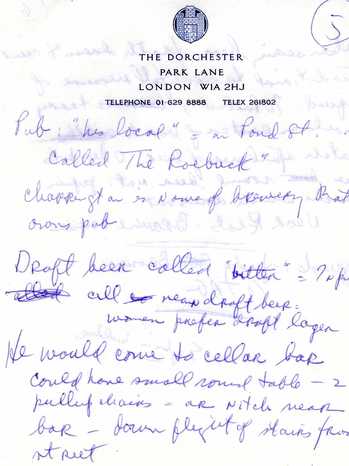
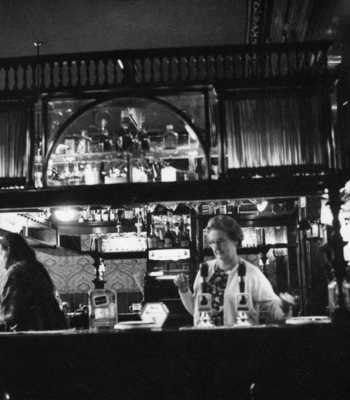
Evidently, Sylvia Wallace eventually tired of playing second fiddle to her husband. In the 1970s, she broke out with two best-selling novels of her own, The Fountains and Empress, and thus solidified the Wallaces’ reputation as one of the publishing world’s most prolific families.